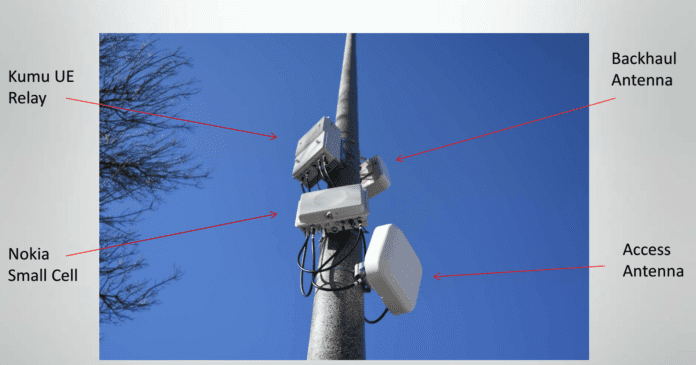A startup that grew out of Stanford, Kumu Networks has gradually gone from raising eyebrows and capital, to making major carrier deals, and now is reaching an inflection point, according to Steven Hong, co-founder and director of product at the company.
Kumu said its full-duplex relay technology enables small cells to self-backhaul by using the same channel to provide access and backhaul.
“For kind of the first time the technology is kind of moving out of the lab and the field trial stages and we are actually having our first [general availability] deployment,” Hong said. “It was always a question of fantastic technology, but there were always challenge and hurdles. We’ve had several successful commercial field trials in 2016, and we’re beginning to deploy in live GA networks this year.”
One of those trials was with Italian mobile operator TIM, which conducted a test in the vicinity of Turin, Italy. TIM said the technology will allow mobile transmissions in downlink and uplink to travel at the same time, even if of different intensities, and is ideal for 4G networks small cells in areas where there is no traditional backhaul solution available.
“The field trials throughout 2016 really helped us commercially harden our technology and really identify the use cases,” Hong said. In Turin, “we learned that the full duplex relay has a ton of benefits in enhancing capacity in consumer hot spots and also extending coverage in areas where its difficult to get traditional backhaul.”
Hong said, based on trials the technology helps achieve a two-times to five-times capacity boost, helping LTE networks actually deliver their peak rates and bridge the “gap between reality and expectation.”
In the context of a centralized radio access network architecture, which centralizes the baseband unit and uses fiber to connect remote radio heads, Hong said integrated full-duplex “is really interesting from a future looking perspective.
Looking ahead to 5G, Hong noted many next-generation applications will be internet of things-related and add significant uplink traffic to networks.
“Most of the applications will stream a large amount of data to the cloud,” Hong said. “What people are discussing right now is two separate networks: narrowband IoT for the uplink, then millimeter wave for the downstream for the users. We think there’s a huge opportunity, effectively, to use full-duplex to reuse the spectrum you’re using on the downlink for machine traffic on the uplink.”
Kumu said it has a commercial-ready full-duplex relay ready to go and is now working on a single-chip solution with the goal of a commercial launch in 2018.

